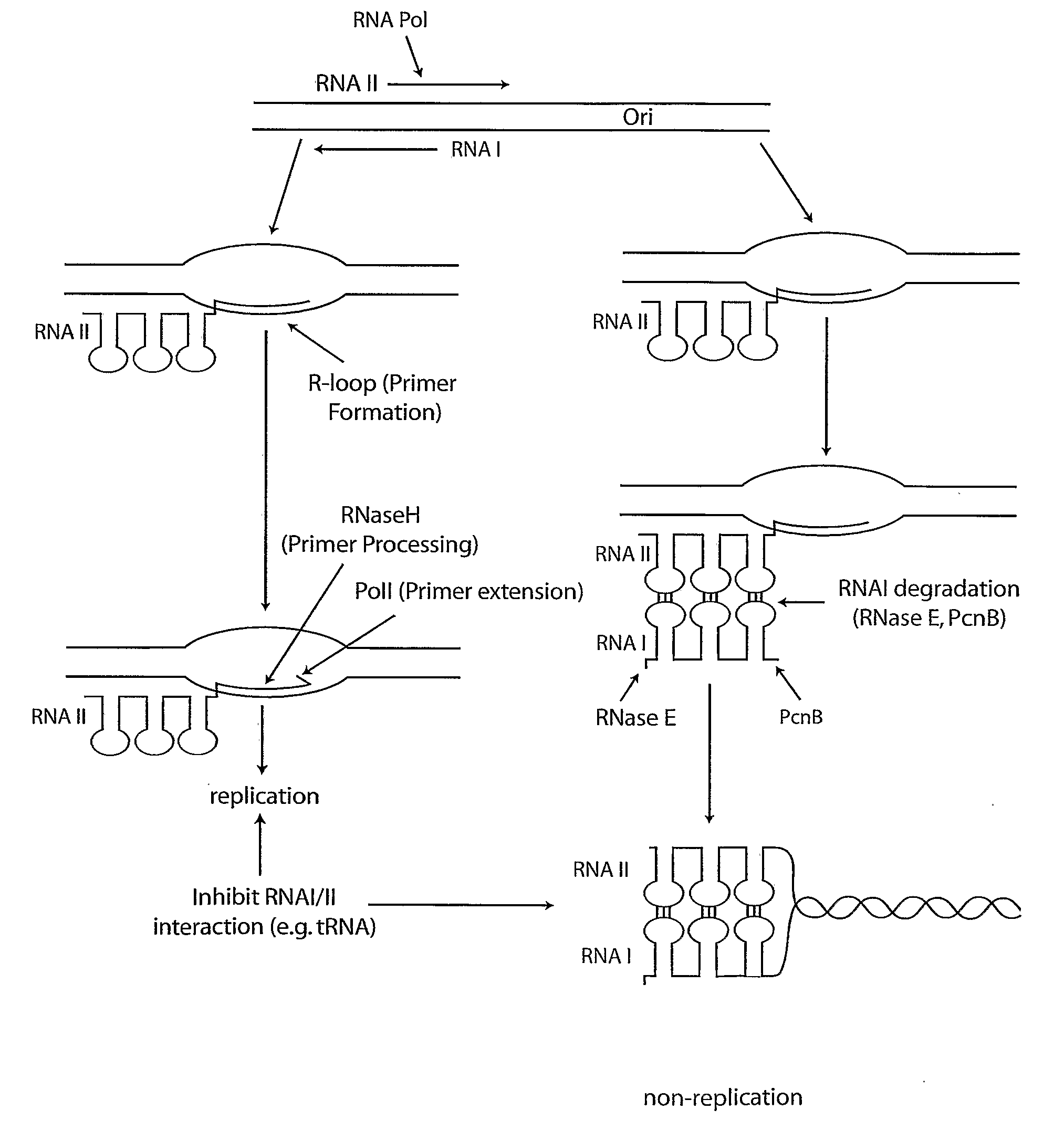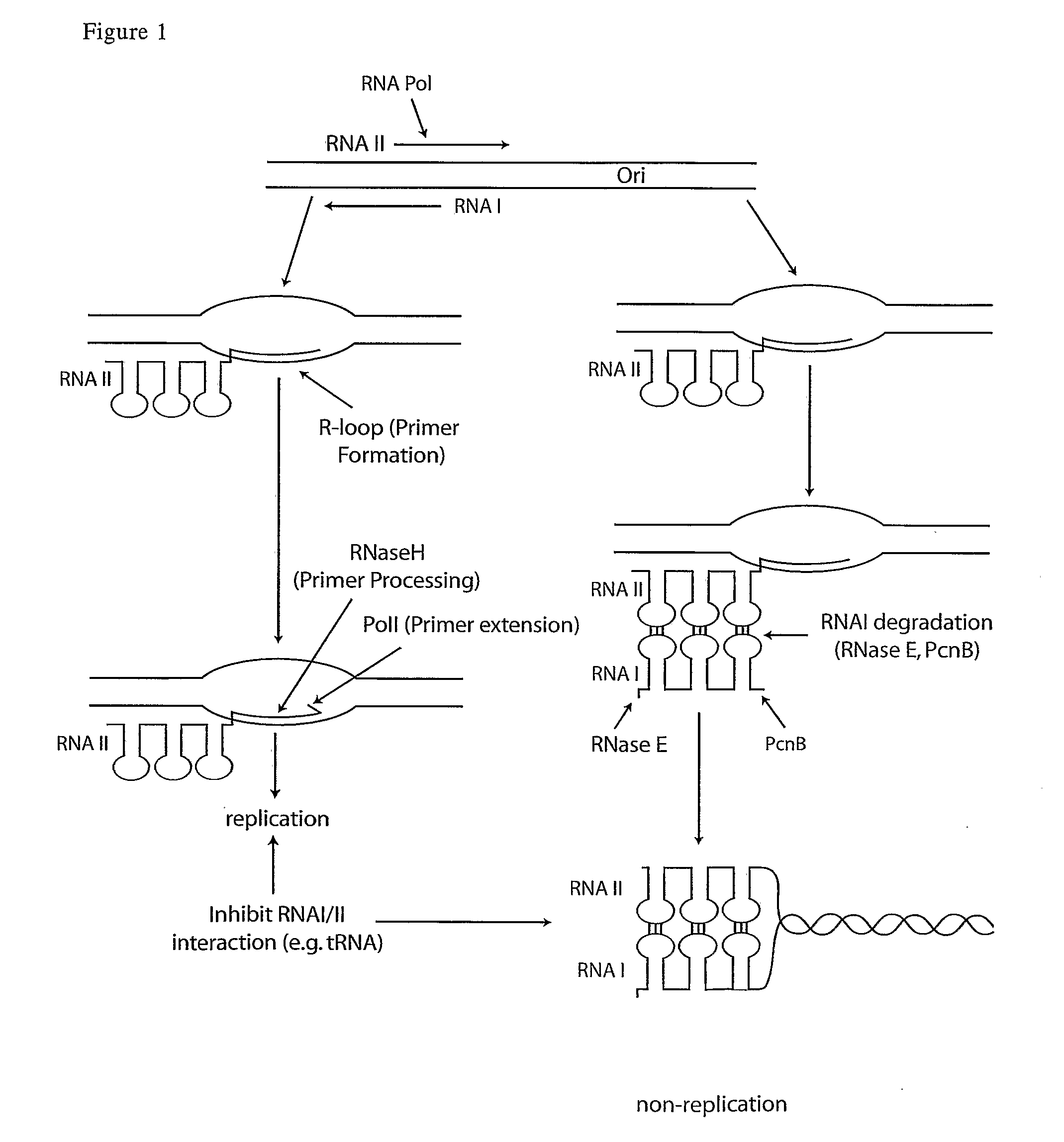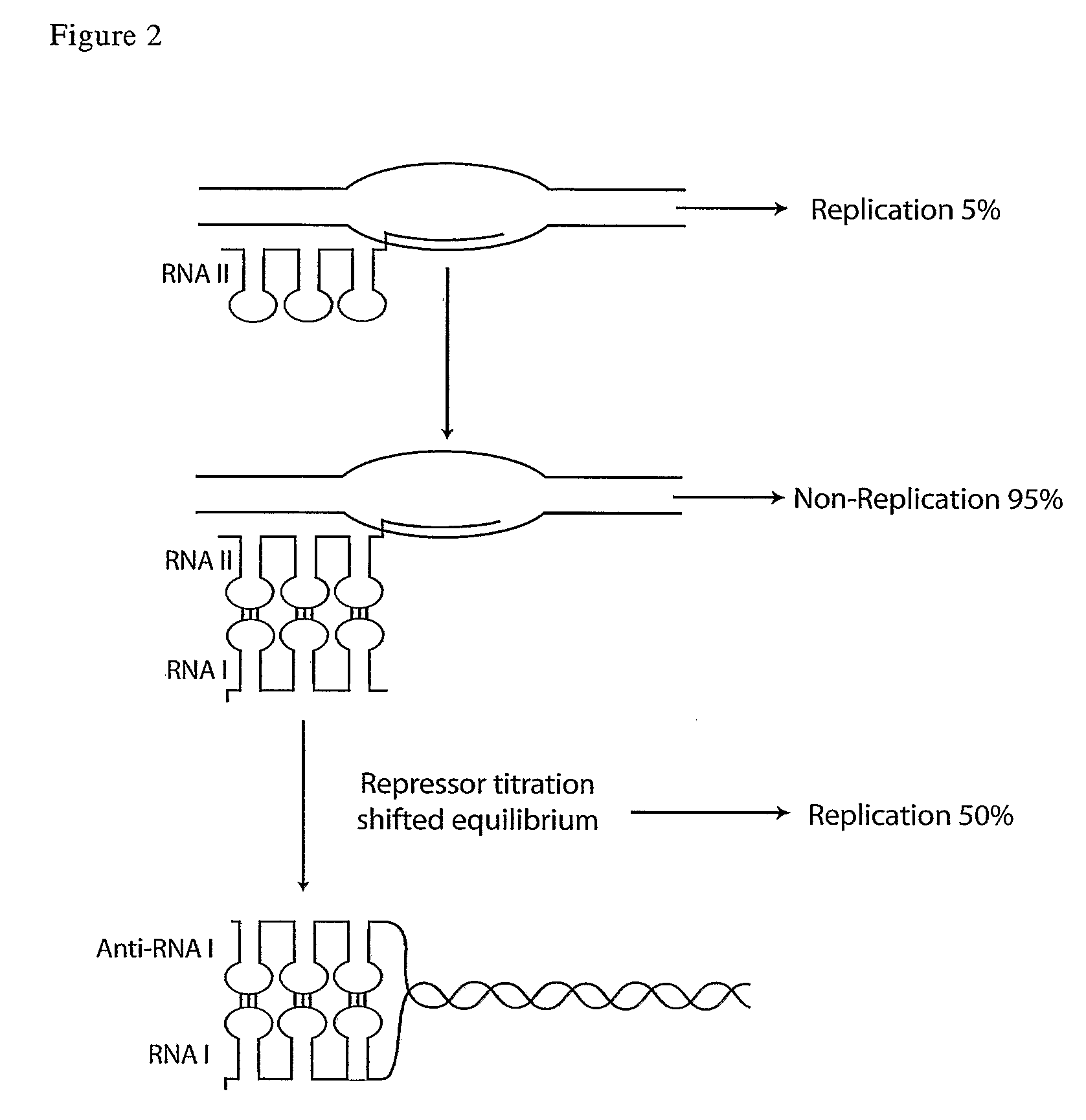Compositions and processes for improved plasmid DNA production
a technology of plasmid dna and process, applied in biochemistry apparatus and processes, microorganisms, bacteria, etc., can solve the problems of inability to utilize existing plasmids to improve the yield of existing plasmids without reengineering, and the current purity attainable from established methods is exceeded. , the effect of improving the yield of plasmids
- Summary
- Abstract
- Description
- Claims
- Application Information
AI Technical Summary
Benefits of technology
Problems solved by technology
Method used
Image
Examples
example 1
Creation of pEDF11-RNA Expression Plasmids
[0091]A Tac promoter expression plasmid was created for stable expression of RNA by: 1) Deletion of the Ribosome binding site-cloning region leaving a XhoI cloning site and 2) Insertion of TrpA transcriptional terminator annealed oligonucleotides at the XhoI site.
[0092]The RNA expression region encodes an 5′ end hairpin loop formed by the lac operator-flanking sequence (start 5′ AATTGTG 3′ to 5′ CACAATT 3′ end) and has the TrpA terminator hairpin loop (start 5′ GCCCGC 3′ to 5′ GCGGGC 3′ end) at the 3′ end. These stabilizers should limit RNaseE and RNaseIII exodigestion, to increase transcript stability.
[0093]The structure of the RNA expressed from the parent vector is:
(5′Hairpin loop)-CTCGAG-(3′ Terminator Hairpinloop) XhoI
[0094]The target antisense RNA's were cloned between the two loops using the unique XhoI site. The structure of the antisense RNA expressed from the vector is:
(5′Hairpin loop)-CTCGAG-an...
example 2
Creation of pWizBang 2.0-RNAI
[0097]pWizBang 2.0
[0098]In order to facilitate the ordered, directional assembly of genes and vectors, we devised a new vector for a modular approach, in which each DNA fragment is assigned two unique, non-palindromic address tags. This method relies upon the ability of class IIS restriction enzymes to digest at a distance from the enzyme site. Blunt DNA fragments (synthetic dsDNA; PCR amplicons; or blunt restriction fragments) are cloned into a SmaI site of the vector, PWizBang 2.0 (Nature Technology Corporation, Lincoln, Nebr.), and the class IIS enzyme AarI (a seven base cutter commercially available from Fermentas, or an AarI isoschizomer, is used to cleave the DNA, leaving a four base, 5′-overhang precisely beginning and ending at the cloning site (i.e., the first and last bases of the 4 base overhangs correspond to the first and last bases of the insert). The fragments are recovered and used in ligation reactions.
pWizBang 2.0-RNAI Constructs
[0099]I...
example 3
Creation of pEDF-RNAI Antisense Constructs
[0100]Two sets of RNAI antisense constructs were created, targeting:[0101]i) the entire region of homology (residues 1-108)[0102]ii) the loop structure (residues 10-108) deleting the RNaseE cleavage site
[0103]Both clones are identical to the RNAII primer, through the region of homology. The RNAII primer is expressed at low level with alternative folding conformations (mediated by downstream sequences) that do not bind RNAI.
[0104]Initial comparative evaluation of 1-108 and 10-108 demonstrated both constructs could induce pMB1 reporter plasmid copy number. Due to a slightly improved induction observed with the 10-108 clone, this clone was selected for further analysis.
[0105]The inserts were cloned in both orientations in pEDF-pVEX1. The sense orientation was a control for each plasmid, as well as the parent pEDF-pVEX1. Multimer inserts were also created.
[0106]Directional multimers of antisense RNAI created by RESL were also created (Example 5)...
PUM
| Property | Measurement | Unit |
|---|---|---|
| temperatures | aaaaa | aaaaa |
| temperatures | aaaaa | aaaaa |
| temperature | aaaaa | aaaaa |
Abstract
Description
Claims
Application Information
 Login to View More
Login to View More - R&D
- Intellectual Property
- Life Sciences
- Materials
- Tech Scout
- Unparalleled Data Quality
- Higher Quality Content
- 60% Fewer Hallucinations
Browse by: Latest US Patents, China's latest patents, Technical Efficacy Thesaurus, Application Domain, Technology Topic, Popular Technical Reports.
© 2025 PatSnap. All rights reserved.Legal|Privacy policy|Modern Slavery Act Transparency Statement|Sitemap|About US| Contact US: help@patsnap.com



